Apple took the wraps off Vision Pro, an expensive pair of goggles the company promises will unlock a new universe of magical new virtual- and augmented-reality apps.
In this article, in addition to a different review of Apple’s virtual reality headset, we try to compare its technical specifications as far as possible with the flagship headsets of Sony and Meta companies.
You can also watch the review video on our YouTube channel:
1) Design & Weight

The headset mask, which Apple dubs a Light Seal, and strap, which Apple dubs a Head Band are cloth-lined and modular, and Apple says they can flex to fit to a variety of face shapes and head sizes. The Head Band is ribbed and fits around the back of your head, and you can swap different sizes and styles of band. Zeiss has created custom optical inserts that magnetically attach to the lenses for people who wear glasses.
The Vision Pro has two buttons on the top of the headset. One is an action button that allows you to take spatial photos and videos. And for those worried about being unwittingly photographed, Apple promises that the front display will use EyeSight to signal that a photo or video is being taken. The other button is a crown similar to the Apple Watch, which can control the level of immersion you are in while wearing the headset.

Apple also continues its focus on fit with the Head Band, which is also available in a variety of sizes. It is made of a 3D knitted fabric and attaches via a simple locking mechanism at the front of the headband.
With a weight of 454 grams, Apple Vision Pro is about 106 grams lighter than PlayStation VR 2, with a weight of 560 grams, and about 45 grams lighter than Meta Quest 3, which weighs 499 grams. Therefore, it can be said that Apple has been able to produce one of the lightest flagships of virtual headsets in its new design.
2) Controller

The device is controller-free, and you browse rows of app icons in an operating system called visionOS by looking at them. You can tap to select and flick to scroll, you can also give voice commands, and Apple says hundreds of Thousands of familiar iPhone and iPad apps will automatically work that way. On top of that, the headset supports Bluetooth accessories, including Magic Keyboard and Magic Trackpad, and lets you connect your Mac to use inside the headset. Downward-facing cameras can capture your hands even if they’re resting low on your body.
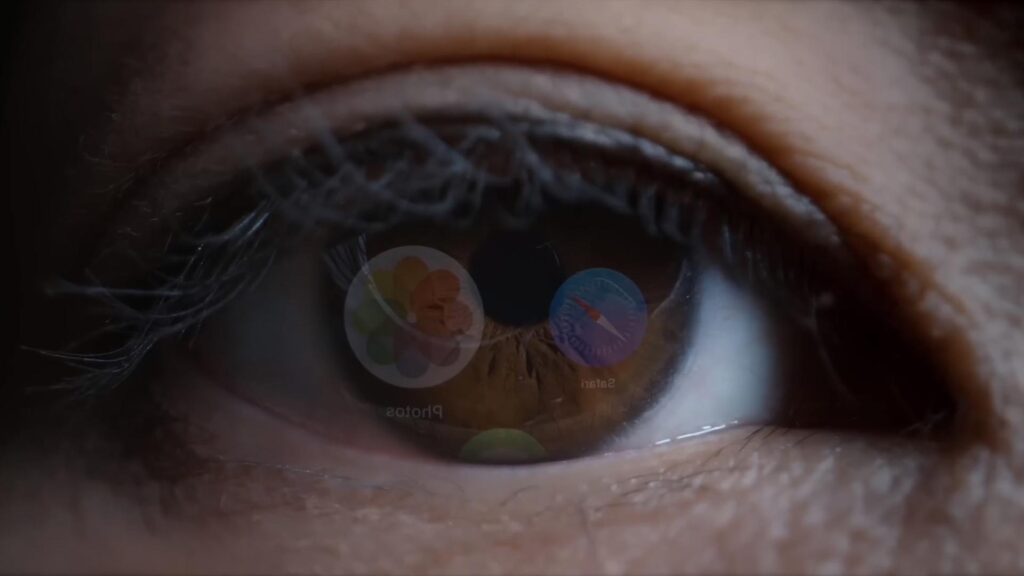
Apple’s Vision Pro uses eye movements and hand movements for navigation. And these intuitive controls are meant to feel natural as well. Apple says all it takes is turning your head to shift the focus of the display, or a simple tap of your fingers to simulate a mouse click. You can even keep your hands in a natural position rather than holding them in front of you when making gestures. Glancing at a search bar and speaking will even allow you to type into the search bar for easy use.
3) Camera and sensors

The headset features 12 cameras, six microphones and five sensors to allow for eye tracking, hand tracking and voice commands to be all you need to control the device. Then inside the headset is a ring of LED lights that project invisible patterns onto your eyes to assist with the eye-tracking. These LED lights also power Optic ID, which is the Vision Pro’s version of Face ID.

The Vision Pro has a singular piece of 3D-formed laminated glass, which acts as an optical surface for the cameras and sensors. That is connected to an aluminum alloy frame that gently curves to wrap around your face while serving as an attachment point for the Light Seal, the section of fabric that touches the wearer’s face.
4) Display

Vision Pro provides ultra-high resolution, with more pixels for each eye than a 4K TV — with 23 million pixels across two displays, which Apple says is 64 times the pixel density of an iPhone.
Here we come to one of the biggest differences between the Apple headset and other popular headsets in the market. With 23 million pixels in total, Apple Vision Pro has more pixels than Sony’s PSVR 2 headsets with 8.1 million pixels and the Meta Quest 3 headset with 18.2 million pixels, which shows that Apple Vision Pro is a headset with great visual capabilities.

In order to make a better comparison, it is better to know that a 4K TV has about 8.3 million pixels. Meanwhile, Apple has been able to put about 11.5 million pixels in each of its displays that means 38% more. The matter becomes more interesting when we know that Apple has done this on a 1.41-inch screen. So, we are facing a record in pixel density in the history of electronic products. That means something around 4000 pixels per inch, which is about 9 times that of iPhone 14 Pro Max with a pixel density of 460 pixels per inch.

In addition, the Apple headset has the ability to provide 5000 nits brightness, which is completely superior compared to the 265 nits’ brightness of PlayStation VR 2 and the 100 nits brightness of Meta Quest 3. Of course, the mentioned numbers are the maximum brightness that can be produced, and in many cases, the brightness of the display should definitely be reduced.

The headset will display your eyes with a system called EyeSight, and if you’re in full VR, a glowing screen will obscure them to suggest you’re not available and thanks to the new R1 chip developed by Apple, content will get to those displays in just 12ms.
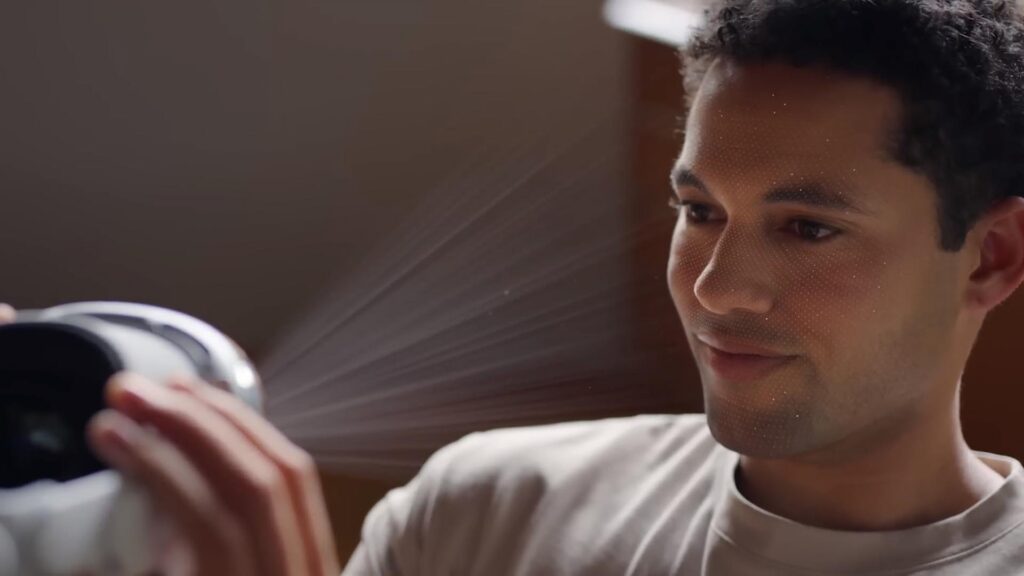
It also creates a digital persona, basically a hyper realistic avatar, by scanning your face. The device uses passthrough video that lets you see the real world in full color, but you can project 3D objects into real space, including pulling objects out of a message thread into the real world. And you can capture and relive 180-degree video with a 3D camera while inside the headset. Apple is also touting TV and Arcade content on the headset, including premium content from Disney. Twin 4K displays inside the headset provide incredible HDR picture quality, but if you wear glasses, you’ll need to get custom ZEISS inserts.
But the biggest productivity upgrade? You can expand your Mac display into a larger 4K display just by looking at a compatible machine. This wirelessly beams the Mac’s display to your headset, letting you view things in the same view as other visionOS apps.

With the new Cinema Environment, you’ll be able to watch shows and movies at the frame rate and aspect ratio the filmmaker intended with immersive Spatial Audio and watch movies on what feels like a 100-feet screen. Vision Pro will also support 3D movies, so you can have your own cinema.
5) OS and apps
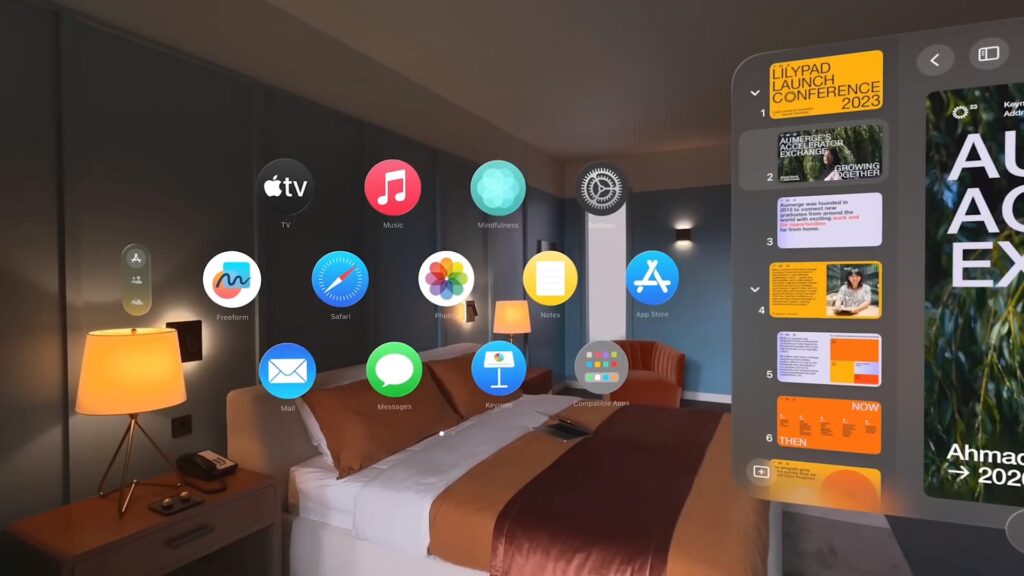
The VR headset runs visionOS, an operating system Apple said was designed from the ground up to support the low-latency requirements of spatial computing. Apple said it gave some developers access to Vision Pro to create apps for the headset, including Microsoft’s Word and Excel and the Sky Guide planetarium app. At launch, Vision Pro will support hundreds of thousands of existing iPhone and iPad apps; in addition, Apple’s Vision Pro supports the Unity game engine to bring 3D apps developed using Unity to the platform.

visionOS allows for 3D experiences native to the Vision Pro. iOS and iPadOS apps will be available in a Vision Pro App Store along with visionOS apps.
Apple showed off a few examples of how these apps operate on the Vision Pro. Photos can be viewed in a massive display right in front of you or in a panoramic view. The Mindfulness app expands into a full-room experience for some meditative bliss. And you can watch movies and shows through Apple TV Plus and Disney Plus on a massive theatre-sized screen. Disney is an official partner with the Vision Pro and is creating exclusive experiences for the headset, including Disney World, Marvel games and more.

Typical productivity apps that you use on your other Apple devices are available on the Vision Pro too. Safari is viewable in a massive display and you can expand it to see all your open tabs at once. FaceTime is there too, and you can move people’s video feeds to one side of your display while keeping other apps in view.
You, however, won’t be visible in FaceTime. At least, not the real version of you. Instead, the Apple Vision Pro will create a Digital Persona to represent you in FaceTime that will simulate your face and hand movements.
6) Sound and Speaker
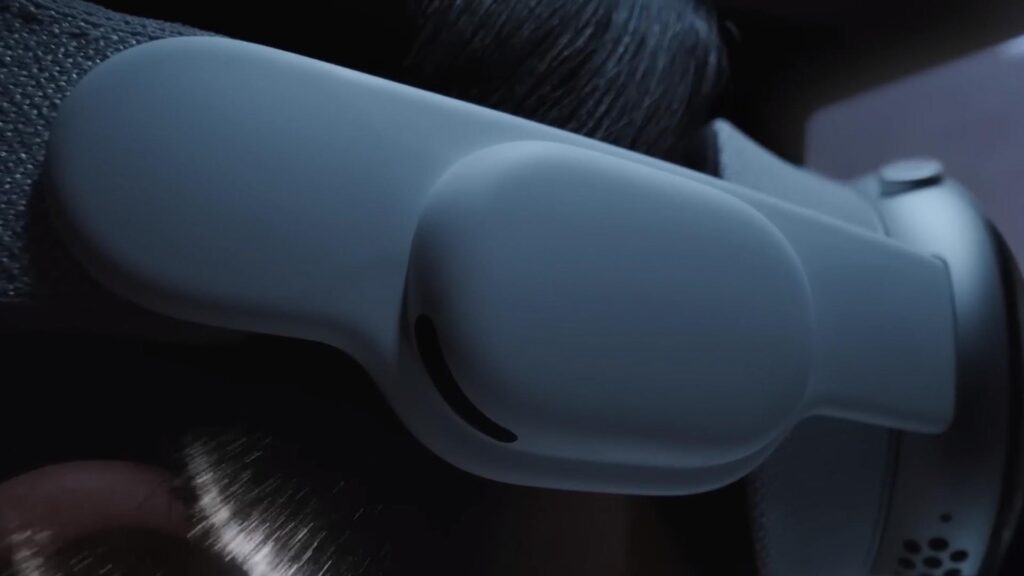
Finally, Apple promises spatial audio thanks to a speaker on each side of the headset, near where it connects with your Head Band. These speakers — or audio pods — provide what Apple calls “the most advanced Spatial Audio system ever.” The individually amplified drivers inside each audio pod can even be fine-tuned to deliver Personalized Spatial Audio based on your head and ears.
7) Battery and Charging
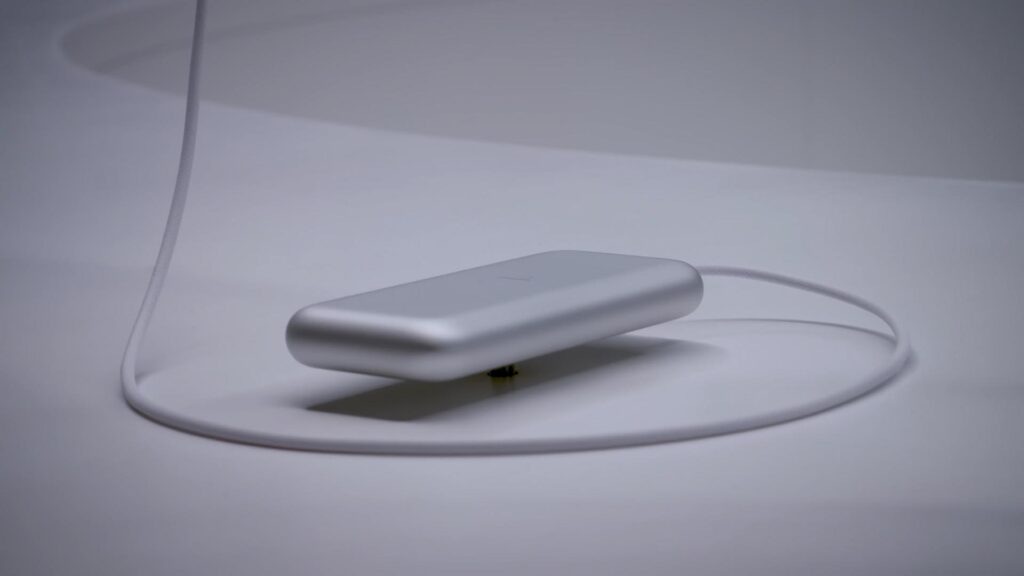
Apple Vision Pro has an external battery that lasts up to two hours and can connect via a supple woven cable so it slips into a pocket, or you can plug it into external power and use it all day.
8) Performance

Under the hood, the Vision Pro is powered entirely by Apple silicon. An M2 chip does most of the heavy lifting, but a brand-new R1 chip handles the sensor inputs and ensures the display doesn’t lag behind. Apple says the R1 chip keeps the input lag of the twin 4K Micro OLED displays at just around 12ms that is eight times faster than the blink of an eye.
The Vision Pro may not be aimed at playing the best VR games, but that doesn’t mean you can’t game with it. Apple Arcade provides over 100 games, including NBA 2K, that will be playable on day one. And you can even use a Bluetooth controller to play your games since the Apple Vision Pro has no first-party controllers.

If we want to theoretically compare the graphics processing power of the Apple headset with other headsets, we will reach interesting results. According to the hardware specifications of Apple Vision Pro, this headset has about 3.6 teraflops of processing power, which is about 1.5 times the 2.4 teraflops processing power of Meta Quest 3. But compared to the PSVR 2 with a processing power of 10.28 teraflops, thanks to the capabilities of the PlayStation 5, it completely leaves the competition. However, it should be noted that the applications, technologies and capabilities of the mentioned headsets are completely different and this comparison can only be a somewhat correct comparison in the field of gaming.
9) Price and release date

We believe that augmented reality is a profound technology. Built upon decades of Apple innovation, Vision Pro is years ahead and unlike anything created before, with a revolutionary new input system and thousands of groundbreaking innovations.

The Apple Vision Pro will cost $3,499 when it goes on sale in early 2024. Meanwhile, the Meta Quest 3 and PlayStation VR 2 will cost $3,000 less than Apple’s headset.
With the price that Apple has set aside for its headset, you can buy a PlayStation 5 device with PlayStation VR 2 or an Xbox Series X console with Meta Quest 3. Further, with the remaining money, you can also have a 4K 65-inch TV.
Among Apple products, you can buy a 15-inch MacBook Air, an Apple Watch Series 8, an iPhone 14 Pro and an iPad Air with the cost of this headset and keep $150 in your pocket.
For all of Apple’s razzle-dazzle, there remains the question of whether the long-awaited VR headset can finally help establish virtual reality as a popular mainstream technology, or whether, despite the heft of Apple’s investment and stellar global brand, this is essentially a high-priced tech toy.
Since Apple’s headset is not yet available to the public, one cannot judge whether to buy it based on its very high price. The issue becomes more complicated when we know that we are dealing with the first generation of this technology, and as a result, paying 7 times more for it than other competitors in the market, will not be an easy decision.

